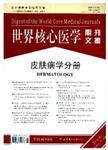592例上肢深静脉血栓形成患者的前瞻性登记研究
Upper extremity deep vein thrombosis: A prospective registry of 592 patients作者机构:Department of Medicine Brigham and Women’s Hospital Har vard Medical School 75 Francis St Boston MA 02115 United States Dr.
出 版 物:《世界核心医学期刊文摘(心脏病学分册)》 (Digest of the World Core Medical Journals(Cardiology))
年 卷 期:2005年第1卷第2期
页 面:26-27页
学科分类:1002[医学-临床医学] 100201[医学-内科学(含:心血管病、血液病、呼吸系病、消化系病、内分泌与代谢病、肾病、风湿病、传染病)] 10[医学]
主 题:上肢深静脉 血栓形成 传统危险因素 静脉导管 预防性治疗 人口统计学 禁忌证
摘 要:Background Upper extremity deep vein thrombosis (UEDVT) occurs spontaneously or sometimes develops as a complication of pacemaker use, long term use of a c entral venous catheter (CVC), or cancer. Methods and Results To improve our und erstanding of UEDVT, we compared the demographics, symptoms, risk factors, proph ylaxis, and initial management of 324 (6%) patients with central venous cathete r (CVC) associated UEDVT, 268 (5%) patients with non CVC associated UEDVT, a nd 4796 (89%) patients with lower extremity DVT from a prospective US multicen ter DVT registry. The non CVC associated UEDVT patients were younger (59.2±18 .2 versus 64.2±16.9 years old; P 0.0001), less often white (65%versus 73%; P 0.01), leaner (body mass index [BMI] 26.8±7.1 versus 28.5±7.3 kg/m2; P 0. 00 1), and more likely to smoke (19%versus 13%; P=0.02) than the lower extremity DVT patients. By way of propensity analysis and multivariable logistic regressi on analysis, we determined that an indwelling CVC was the strongest independent predictor of UEDVT (odds ratio [OR], 7.3; 95%confidence interval [CI], 5.8 to 9 .2). An age of 67 years, a BMI of 25 kg/m 2, and hospitalization were the inde pendent predictors of non CVC associated UEDVT. Most(68%) UEDVT patients were evaluated while they were inpatients. Only 20%of the 378 UEDVT patients who di d not have an obvious contraindication to anticoag ulation received prophylaxis at the time of diagnosis. Conclusions UEDVT risk factors differ from the conventional risk factors for lower extremity DVT. Our findings identify deficiencies in our current understanding and the prophylaxis of UEDVT and generate hypotheses for future research efforts.



